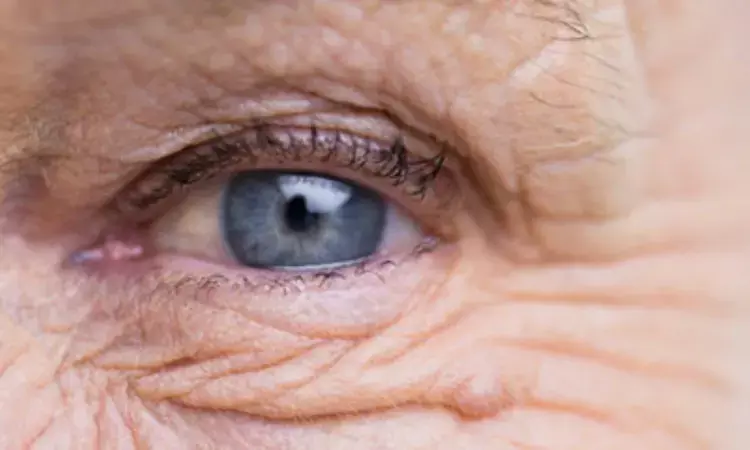- Home
- Medical news & Guidelines
- Anesthesiology
- Cardiology and CTVS
- Critical Care
- Dentistry
- Dermatology
- Diabetes and Endocrinology
- ENT
- Gastroenterology
- Medicine
- Nephrology
- Neurology
- Obstretics-Gynaecology
- Oncology
- Ophthalmology
- Orthopaedics
- Pediatrics-Neonatology
- Psychiatry
- Pulmonology
- Radiology
- Surgery
- Urology
- Laboratory Medicine
- Diet
- Nursing
- Paramedical
- Physiotherapy
- Health news
- Fact Check
- Bone Health Fact Check
- Brain Health Fact Check
- Cancer Related Fact Check
- Child Care Fact Check
- Dental and oral health fact check
- Diabetes and metabolic health fact check
- Diet and Nutrition Fact Check
- Eye and ENT Care Fact Check
- Fitness fact check
- Gut health fact check
- Heart health fact check
- Kidney health fact check
- Medical education fact check
- Men's health fact check
- Respiratory fact check
- Skin and hair care fact check
- Vaccine and Immunization fact check
- Women's health fact check
- AYUSH
- State News
- Andaman and Nicobar Islands
- Andhra Pradesh
- Arunachal Pradesh
- Assam
- Bihar
- Chandigarh
- Chattisgarh
- Dadra and Nagar Haveli
- Daman and Diu
- Delhi
- Goa
- Gujarat
- Haryana
- Himachal Pradesh
- Jammu & Kashmir
- Jharkhand
- Karnataka
- Kerala
- Ladakh
- Lakshadweep
- Madhya Pradesh
- Maharashtra
- Manipur
- Meghalaya
- Mizoram
- Nagaland
- Odisha
- Puducherry
- Punjab
- Rajasthan
- Sikkim
- Tamil Nadu
- Telangana
- Tripura
- Uttar Pradesh
- Uttrakhand
- West Bengal
- Medical Education
- Industry
Study Reveals Association Between Cardiac Arrhythmias and Macular Degeneration Risk

USA: A recent study presented at the annual meeting of the American Academy of Ophthalmology, which took place from October 18 to 21 in Chicago, found that cardiac arrhythmias, including myocardial infarction and atrial fibrillation, are linked to age-related macular degeneration (AMD).
Significant cardiovascular conditions, such as myocardial infarction, cardiac valve disease, and ischemic stroke, have been linked to age-related macular degeneration and subretinal drusenoid deposits (SDDs). In light of this, R. Theodore Smith, M.D., Ph.D., of the Icahn School of Medicine at Mount Sinai, and colleagues examined the relationship between cardiac arrhythmias and SDDs and the impact of heart failure on cardiac index (CI).
For this purpose, the researchers conducted a study involving 55 cardiac patients aged 49 to 91 at Mount Sinai Hospital. The patients underwent spectral domain optical coherence tomography scans to assess the presence of subretinal drusenoid deposits. Patient charts were then reviewed for cardiac index and arrhythmias.
The following were the key findings of the study:
- Cardiac arrhythmias may contribute to developing subretinal drusenoid deposits through ocular hypoperfusion. Among the 30 patients with arrhythmias, 15 were found to have SDDs, compared to only five out of 25 patients without arrhythmias.
- The mean cardiac index was significantly lower in patients with SDDs (1.95 ± 0.60 L/min/m²) than those without (2.71 ± 0.73 L/min/m²).
"Patients with common arrhythmias, such as atrial fibrillation, or those with serious cardiovascular conditions like myocardial infarction and stroke should undergo immediate optical coherence tomography of the macula to check for subretinal drusenoid deposits. If SDDs are detected, a retinal referral is warranted," Smith stated to Elsevier’s PracticeUpdate.
He continued, "A large cohort of age-related macular degeneration patients with SDDs and/or typical drusen should be evaluated for cardiovascular disease through electrocardiograms to check for arrhythmias, as well as cardiac and carotid ultrasound tests for other serious vascular issues. This approach will clarify the true risk associated with SDDs compared to drusen regarding CVD and help identify previously undetected cardiovascular problems, particularly among Black, Hispanic, and female populations, where underdiagnosed CVD is a significant public health concern."
"Cardiac arrhythmias, such as atrial fibrillation, are linked to subretinal drusenoid deposits in age-related macular degeneration. These arrhythmias can lead to heart failure by disrupting the relationship between ventricular output and filling, potentially contributing to SDDs through ocular hypoperfusion. The observed decrease in cardiac index in patients with SDDs supports this mechanism. Furthermore, SDDs may serve as a biomarker for serious heart disease, highlighting a critical concern for underserved populations and women," the researchers concluded.
Reference: https://aao.apprisor.org/apsSession.cfm
Dr Kamal Kant Kohli-MBBS, DTCD- a chest specialist with more than 30 years of practice and a flair for writing clinical articles, Dr Kamal Kant Kohli joined Medical Dialogues as a Chief Editor of Medical News. Besides writing articles, as an editor, he proofreads and verifies all the medical content published on Medical Dialogues including those coming from journals, studies,medical conferences,guidelines etc. Email: drkohli@medicaldialogues.in. Contact no. 011-43720751


